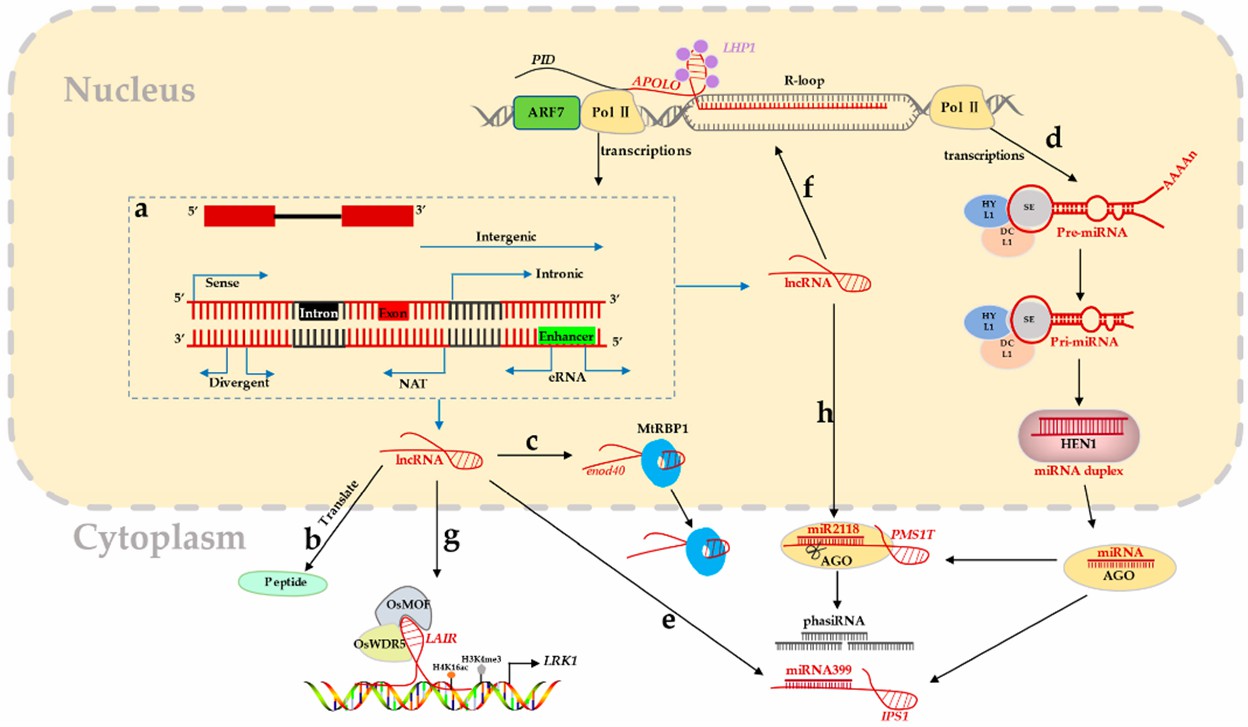Plant nematodes, which can damage many crops, are the world's most difficult soil-borne pathogens to control. Through their secretions, nematodes induce and regulate the cellular development of their host plants to establish specialized giant cells for themselves, thus providing a constant supply of nutrients and establishing a stable intercropping relationship. The discovery that microRNAs (miRNAs), long non-coding RNAs (lncRNAs), and circular RNAs (circRNAs) among non-coding RNA (ncRNAs) stimulate plant immunity against nematode infestation, which provides a new molecular regulatory model for the mechanism of resistance to plant nematode infestation.
Lifeasible is a credible provider of high-quality functional analysis services of plant non-coding RNA to nematode infection. Our platform is equipped with state-of-the-art facilities and highly experienced staff to support projects in all areas. We guarantee to deliver results on time to our customers.
 Fig.1 The source and mechanism of lncRNA. (Zhao Z et al., 2022)
Fig.1 The source and mechanism of lncRNA. (Zhao Z et al., 2022)
Lifeasible provides fast turnaround, high-quality services at competitive prices for customers worldwide. Our advanced technical platforms can help our clients complete the research process with quality and quantity. If you are interested in our services or have any questions, please feel free to contact us or make an online inquiry.
Reference:
Lifeasible has established a one-stop service platform for plants. In addition to obtaining customized solutions for plant genetic engineering, customers can also conduct follow-up analysis and research on plants through our analysis platform. The analytical services we provide include but are not limited to the following:
STU-CRISPR System Improves Plant Genome Editing Efficiency
April 19, 2024
Application of Exosomes in Facial Beauty
April 12, 2024